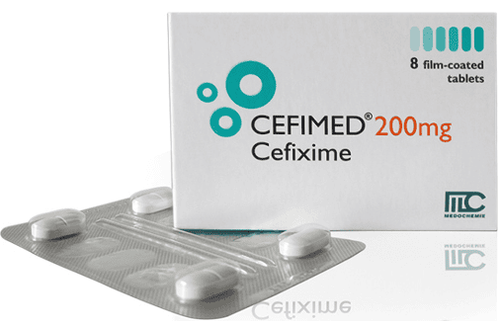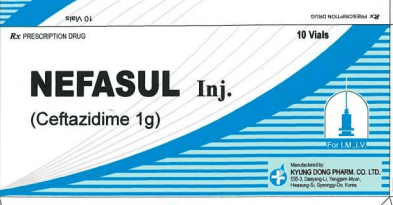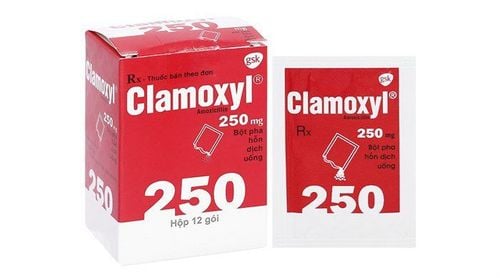This is an automatically translated article.
Tesam is indicated for the treatment of lower respiratory tract infections, urinary tract infections with complications, abdominal infections,... So how to use Tesam? Let's find out the necessary information about Tesam drug through the article below.
1. What is Tesam?
Drug group: Antiparasitic drugs
Dosage form: Lyophilized powder for injection
Packing: Box of 1 vial, 20 vials, 42 vials
Ingredients:
Piperacillin (as Piperacillin sodium) 4g Tazobactam (as Tazobactam) sodium) 0.5g Manufacturer: Klonal S.R.L - Argentina
2. What are the effects of Tesam?
2.1 Indications Tesam is indicated for the treatment of:
Systemic or local infections confirmed or suspected due to susceptible organisms, Lower respiratory tract infections, Complicated urinary tract infections, Infections Intra-abdominal , Soft tissue skin infections, Sepsis, Obstetrics and gynecology infections, Polymicrobial infections. Piperacillin/Tazobactam is synergistic with aminoglycosides against some strains of Pseudomonas aeruginosa. Combination therapy has been successful, especially in patients with compromised resistance. As soon as the results of the antibiogram are available, the antibiotic therapy should be adjusted.
2.2 Dosage - How to use Dosage:
Adults and children over 12 years old: 4g piperacillin/0.5g tazobactam IV every 8 hours. The total daily dose may vary from 2.25 g to 4.5 g every 6 to 8 hours.
Children under 12 years old: There are not enough data to study Tesam for children under 12 years of age.
Renal impairment:
Tesam dose must be adjusted according to creatinine clearance:
Creatinine clearance 20-80 ml/min: 12 g/1.5 g/day divided into 4 g/500 mg every 8 hours. Creatinine clearance <20 ml/min: 8 g/1 g/day divided into 4 g/500 mg every 12 hours. For patients on hemodialysis: the maximum total daily dose is 8 g Piperacillin/ 1g Tazobactam.
In addition, since a 4-hour dialysis cycle can remove 30-50% of piperacillin, 2g/250mg Tesam should be injected after each dialysis cycle.
Duration of treatment: in case of acute infection, Tesam must be continued for at least 48 hours after the fever is gone or the clinical symptoms have resolved.
How to use:
Intravenous injection: Each vial of Tesam 4.5g mixed with 20ml of sterile distilled water or 0.9% NaCl injected slowly in 3-5 minutes.
Intravenous infusion: Each 4.5g vial of Tesam is mixed with 20ml of sterile distilled water or 0.9% NaCl, then further diluted to at least 50ml intravenously over 20-30 minutes.
2.3 Overdose and management No specific antidote. There is no experience with Tesam overdose. However, in an emergency, all additional medical measures are indicated as for piperacillin. Excessively high concentrations of piperacillin in the serum can be removed by dialysis.
However, doses of 24 g piperacillin/day or more have been used in humans without adverse effects observed. In cases of motor agitation or convulsions, anticonvulsants (eg, diazepam or a barbiturate) may be indicated. In the case of severe anaphylaxis, immediate treatment measures should be initiated.
In case of severe and persistent diarrhea, the possibility of pseudomembranous colitis must be considered. Therefore, piperacillin/tazobactam should be discontinued in such cases and appropriate therapy initiated (eg, oral teicoplanin or oral vancomycin). The use of drugs that inhibit intestinal motility is contraindicated.
3. Drug interactions
Co-administration of probenecid with Tesam increased the half-life and clearance rate of both piperacillin and tazobactam, but peak plasma concentrations of the components were not affected. No drug interactions were observed between piperacillin/tazobactam and vancomycin or tobramycin.
When combining piperacillin/tazobactam with another drug, do not mix in the same vial or inject at the same time due to physical incompatibility.
When used concomitantly with high-dose heparin, oral anticoagulants or drugs that affect the coagulation system and/or platelet function, coagulation parameters should be measured more frequently and carefully monitored. more kidney.
4. Side effects of Tesam
Many patients treated in clinical studies have very severe disease and multiple underlying diseases and physiological impairments, making it difficult to establish a causal relationship between adverse symptoms and use Tesam.
Local adverse events reported as possible, possibly or identified as being related to Tesam treatment were phlebitis (0.2%) and thrombophlebitis (0.3). %).
The most common clinical systemic adverse reactions reported, which could or were determined to be related to piperacillin/tazobactam treatment were diarrhea (3.8%), rash (0.6%) ), erythema (0.5%), pruritus (0.2%), vomiting (0.4%), nausea (0.3%), allergic reactions (0.4%), urticaria ( 0.2%), and superinfection (0.2%).
Several other clinically reported systemic adverse events that could or were identified as related to piperacillin/tazobactam treatment but with a frequency less than 0.1% were: skin reactions, sweating, erythema multiforme, eczema, rash, maculopapular rash, stomatitis, constipation, muscle weakness, hallucinations, dry mouth, hypotension, myalgia, superficial phlebitis, fever, flushing , edema, fatigue. Local reactions include inflammation or pain at the injection site due to not mixing the medication as directed.
Adverse clinical adverse events reported in studies but with no established drug association were transient decrease in white blood cell count, eosinophilia, thrombocytopenia, thrombocytopenia, Coomb positive test, hypokalemia, transient elevation of liver enzymes (SGOT, SGPT, alkaline phosphatase) in serum, bilirubin. Rarely, an increase in renal function parameters (urea, creatinine) has been detected in serum.
5. Notes and cautions when using Tesam
Contraindications:
Contraindicated in patients with a history of allergy to piperacillin and/or cephalosporins or to beta-lactamase inhibitors.
Note/Caution:
Before starting treatment with Tesam, ask carefully about the history of allergy to penicillin, cephalosporin or other allergens. If an allergic reaction occurs during treatment with piperacillin/tazobactam, the drug must be discontinued. Serious hypersensitivity reactions may require management with adrenaline and other emergency measures.
Although Tesam has the characteristic low toxicity of penicillin antibiotics, it is still advisable to periodically check the function of organs such as kidneys, liver, hematopoietic system during long-term treatment. Bleeding manifestations have occurred in some patients treated with beta-lactam antibiotics. These reactions sometimes occur in conjunction with laboratory abnormalities of coagulation such as clotting time, platelet aggregation, and prothrombin time and are more common in patients with renal impairment. If hemorrhagic manifestations occur as a result of antibiotic therapy, the drug should be discontinued and appropriate therapy instituted. As with other antibiotics, the possibility of resistant strains of bacteria should always be borne in mind, especially during prolonged therapy. If this occurs, appropriate action must be taken. As with other penicillins, patients may experience neuromuscular agitation or convulsions if doses higher than the recommended dose are administered intravenously. Cyclic ionization should be performed if the patient has low potassium stores, and always be aware of the possibility of hypokalemia in patients with very low potassium stores and those receiving cytotoxic therapy or taking diuretic. A slight increase in liver function indices can be observed. Taking high-dose, short-term antibiotics to treat gonorrhea may mask or delay the onset of symptoms. Therefore, patients with gonorrhea should be tested for syphilis prior to treatment. Specimens for black-field microscopy can be obtained from any primary lesion, while serological tests must be delayed for a minimum of 4 months. Pregnancy and breast-feeding:
There are no adequate studies on the use of Tesam during pregnancy and while breastfeeding. Tesam did not affect fertility and teratogenicity in rats. However, pending full experimental results, pregnant or lactating women should be treated only when the benefits of treatment outweigh the risks to both the patient and the fetus.
Storage:
Lyophilized powder: vials of Tesam lyophilized powder can be stored at controlled room temperature (15-25°C) for up to three years. When properly mixed as directed, the drug remains stable for 24 hours if kept refrigerated (2-8°C). Tesam must not be mixed with other drugs in the same syringe or infusion bottle. Diluted medication can be kept for 24 hours at cold (2-8°C) and stored in an infusion bag or syringe. Reconstituted Tesam that is not used must be discarded.













